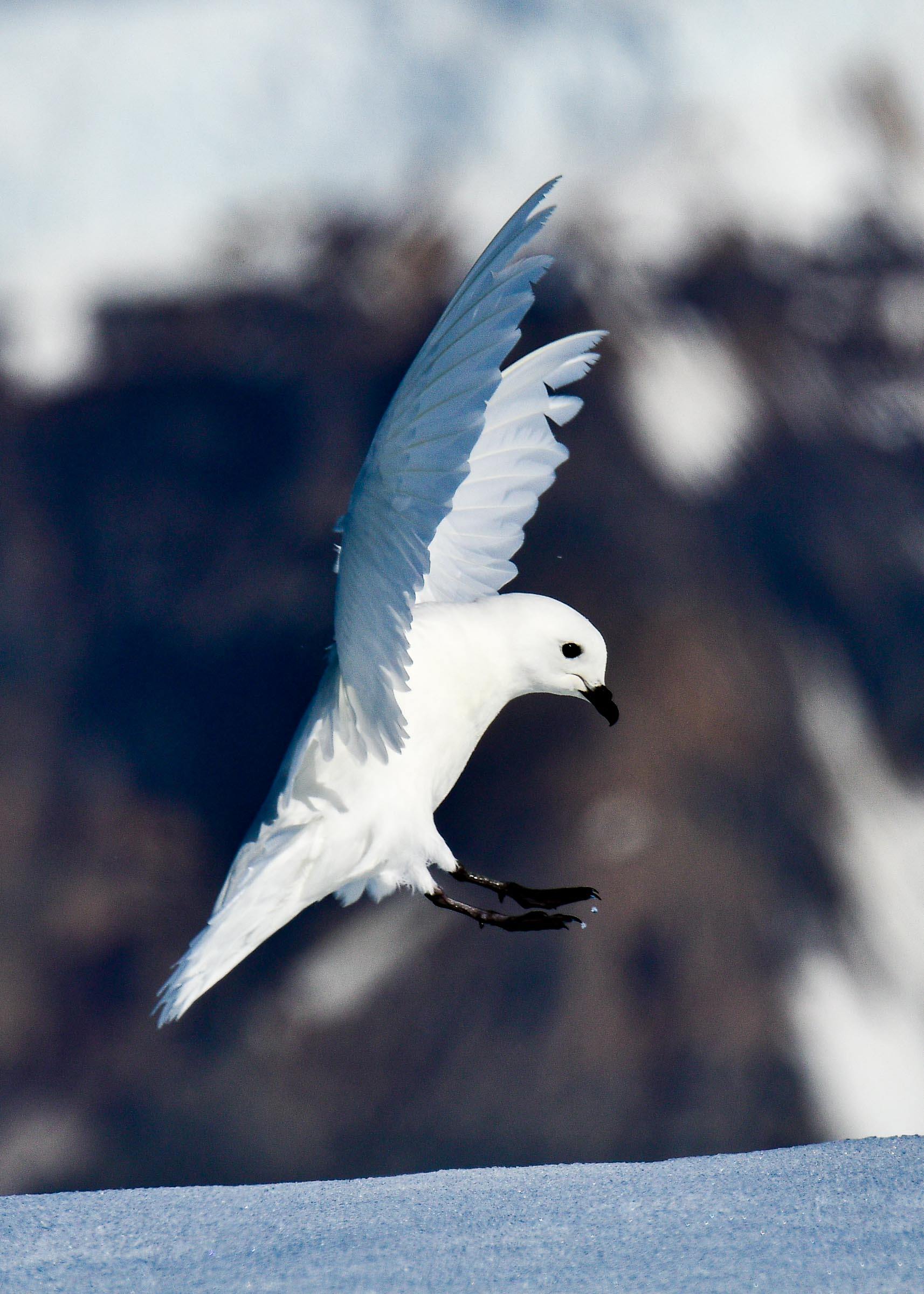Antarctic Photography with Photography Coach Philip Stone
Successful photography can be a major component of many people’s experience in Antarctica, and we want to help you make the most of your chance to capture some wonderful images. Our onboard Photography Coaches assist our guests by covering some of the fundamentals as well as offering advice and guidance in the field.
We asked Photography Coach Philip Stone if he happened to have a favorite image from his last season in Antarctica. He told us it was near impossible to choose, but in the end decided on this stunning shot of a Snow Petrel. Here’s why.

“It’s a tall order being asked to choose one image amongst many as a favorite. Scrolling through last season’s Antarctic images – about 20,000 individual frames- it’s a dazzling variety of sweeping landscapes, stunning icebergs, and clear-blue skies, comical yet sublimely perfect penguins, countless ear-to-ear smiles from our passengers, crew, staff, and whales, so many whales…
But choose I must and this image of a snow petrel landing on an iceberg in Fournier Bay is one of my favorite moments from the 2019-2020 season. Photographers know well that capturing birds in flight is tricky. Not only do their fast and fleeting movements make the technical aspects of shooting a challenge, but there are so many variables in terms of position, birds are not known as obliging models! I like this particular image because so many things have come together. The light is bright but soft enough not to blowout the highlights. The wings, eyes, and water droplets are in nicely balanced focus while the background and landing surface melt away with just enough detail to hint at where you are but not so much as to distract from the obvious subject.
I like to look for what I call ’tension’ in a photograph and I feel that here with the way the petrel is positioned: wings cupped with taught feathers braking against the cold air and legs outstretched ready for the impact of landing. It looks both graceful and ungainly at the same time. Snow Petrels are small, they’re fast in flight. We often see them soaring around large icebergs that the ship needs to give a wide berth to and they nest in high, craggy locations. They are elusive. They are also exquisitely beautiful and while clearly robust enough to survive a harsh environment, they also appear quite fragile. All things we could say about Antarctica itself.”
If you’re interested in photography in Antarctica and traveling alongside our Photography Coaches like Phillip Stone, reach out to our team any time to find out more!
See more of Philip’s incredible work here.
